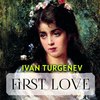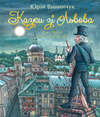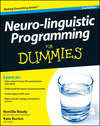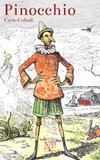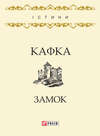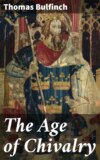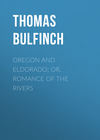Kitabı oku: «The Classic Myths in English Literature and in Art (2nd ed.) (1911)», sayfa 30
295. We are now ready for the explanation of myth-making based upon the Theory of Progress. This is best stated by Mr. Andrew Lang,381 whose argument is, when possible, given in his own language. To the question how the senseless element got into myths, the advocates of this theory answer that it was in the minds and in the social condition of the savages who invented the myths. But since we cannot put ourselves back in history thousands of years to examine the habits of thought and life of early savages, we are constrained to examine whether anywhere nowadays there may exist "any stage of the human intellect in which these divine adventures and changes of men into animals, trees, stars, this belief in seeing and talking with the dead, are regarded as possible incidents of daily human life." As the result of such scientific investigation, numerous races of savages have been found who at this present day accept and believe just such silly and senseless elements of myth as puzzle us and have puzzled many of the cultivated ancients who found them in their inherited mythologies. The theory of development is, then, that "the savage and senseless element in mythology is, for the most part, a legacy from ancestors of civilized races who, at the time that they invented the senseless stories, were in an intellectual state not higher than that of our contemporary Australians, Bushmen, Red Indians, the lower races of South America, and other worse than barbaric people of the nineteenth century." But what are the characteristics of the mental state of our contemporary savages? First and foremost, curiosity that leads them to inquire into the causes of things; and second, credulity that impels them to invent or to accept childish stories that may satisfy their untutored experience. We find, moreover, that savages nowadays think of everything around them as having life and the parts and passions of persons like themselves. "The sky, sun, wind, sea, earth, mountains, trees, regarded as persons, are mixed up with men, beasts, stars, and stones on the same level of personality and life." The forces of nature, animals, and things have for these Polynesians and Bushmen the same powers and attributes that men have; and in their opinion men have the following attributes:
"1. Relationship to animals and ability to be transformed, and to transform others, into animals and other objects.
"2. Magical accomplishments, such as power to call up ghosts, or to visit ghosts and the region of the dead; power over the seasons, the sun, moon, stars, weather, and so forth."382
The stories of savages to-day abound in adventures based upon qualities and incidents like these. If these stories should survive in the literature of these nations after the nations have been civilized, they would appear senseless and silly and cruel to the descendants of our contemporary savages. In like manner, "as the ancient Greeks, Egyptians, and Norsemen advanced in civilization, their religious thought and artistic taste were shocked by myths which were preserved by local priesthoods, or in ancient poems, or in popular religious ceremonials… We may believe that ancient and early tribes framed gods like themselves in action and in experience, and that the allegorical element in myths is the addition of later peoples who had attained to purer ideas of divinity, yet dared not reject the religion of their ancestors."383 The senseless element in the myths would, by this theory, be, for the most part, a "survival." Instead, then, of deteriorating, the races that invented senseless myths are, with ups and downs of civilization, intellectually and morally improved, to such extent that they desire to repudiate the senseless element in their mythical and religious traditions, or to explain it as reasonable by way of allegory. This method of research depends upon the science of mind – psychology, and the science of man – anthropology. It may be called the Anthropological Method. The theory is that of "survival."
According to this theory many of the puzzling elements of myth resolve themselves into survivals of primitive philosophy, science, or history. From the first proceed the cruder systems of physical and spiritual evolution, the generations of gods and the other-world of ghosts; from the second, the cruder attempts at explaining the phenomena of the natural and animal world by endowing them with human and frequently magical powers; from the third, the narratives invented to account for the sanctity of certain shrines and rituals, and for tribal customs and ceremonials, the origin of which had been forgotten. These last are known as ætiological myths; they pretend to assign the aitía, or reason, why Delphi, for instance, should have the oracle of Apollo, or why the ritual of Demeter should be celebrated at Eleusis and in a certain dramatic manner.
It is of course probable that occasionally the questionable element of the myth originated in germs other than savage curiosity and credulity: for instance, in the adventures of some great hero, or in a disease of language by which statements about objects came to be understood as stories about persons, or perhaps in a conscious allegory, or, even, in the perversion of some ancient purer form of moral or religious truth. But, in general, the root of myth-making is to be found in the mental and social condition of primitive man, the confused personality that he extended to his surroundings, and the belief in magical powers that he conferred upon those of his tribesmen who were shrewdest and most influential. This mental condition of the myth-maker should be premised in all scientific explanations of myth-making.
The transition is easy from the personification of the elements of nature and the acceptance of fictitious history to the notion of supernatural beings presiding over, and governing, the different objects of nature – air, fire, water, the sun, moon, and stars, the mountains, forests, and streams – or possessing marvelous qualities of action, passion, virtue, foresight, spirituality, and vice.
The Greeks, whose imagination was lively, peopled all nature with such invisible inhabitants and powers. In Greece, says Wordsworth,384
In that fair clime the lonely herdsman, stretched
On the soft grass through half a summer's day,
With music lulled his indolent repose:
And, in some fit of weariness, if he,
When his own breath was silent, chanced to hear
A distant strain, far sweeter than the sounds
Which his poor skill could make, his fancy fetched,
Even from the blazing chariot of the sun,
A beardless Youth, who touched a golden lute,
And filled the illumined groves with ravishment.
The nightly hunter, lifting a bright eye
Up towards the crescent moon, with grateful heart
Called on the lovely wanderer who bestowed
That timely light, to share his joyous sport:
And hence, a beaming Goddess with her Nymphs,
Across the lawn and through the darksome grove,
Not unaccompanied with tuneful notes
By echo multiplied from rock or cave,
Swept in the storm of chase; as moon and stars
Glance rapidly along the clouded heaven,
When winds are blowing strong. The traveler slaked
His thirst from rill or gushing fount, and thanked
The Naiad. Sunbeams, upon distant hills
Gliding apace, with shadows in their train,
Might, with small help from fancy, be transformed
Into fleet Oreads sporting visibly.
The Zephyrs, fanning, as they passed, their wings,
Lacked not, for love, fair objects whom they wooed
With gentle whisper. Withered boughs grotesque,
Stripped of their leaves and twigs by hoary age,
From depth of shaggy covert peeping forth
In the low vale, or on steep mountain side;
And, sometimes, intermixed with stirring horns
Of the live deer, or goat's depending beard, —
These were the lurking Satyrs, a wild brood
Of gamesome deities; or Pan himself,
The simple shepherd's awe-inspiring God.
The phases of significance and beauty through which the physical or natural myth may develop are expressed with poetic grace by Ruskin, in his "Queen of the Air."385 The reader must, however, guard against the supposition that any myth has sprung into existence fully equipped with physical, religious, and moral import. Ruskin himself says, "To the mean person the myth always meant little; to the noble person, much." Accordingly, as we know, to the savage the myth was savage; to the devotee it became religious; to the artist, beautiful; to the philosopher, recondite and significant – in the course of centuries.
"If we seek," says Ruskin, "to ascertain the manner in which the story first crystallized into its shape, we shall find ourselves led back generally to one or other of two sources – either to actual historical events, represented by the fancy under figures personifying them, or else to natural phenomena similarly endowed with life by the imaginative power, usually more or less under the influence of terror. The historical myths we must leave the masters of history to follow; they, and the events they record, being yet involved in great, though attractive and penetrable, mystery. But the stars and hills and storms are with us now, as they were with others of old; and it only needs that we look at them with the earnestness of those childish eyes to understand the first words spoken of them by the children of men. And then, in all the most beautiful and enduring myths, we shall find not only a literal story of a real person – not only a parallel imagery of moral principle – but an underlying worship of natural phenomena, out of which both have sprung, and in which both forever remain rooted. Thus, from the real sun, rising and setting; from the real atmosphere, calm in its dominion of unfading blue and fierce in its descent of tempest – the Greek forms first the idea of two entirely personal and corporeal gods (Apollo and Athena), whose limbs are clothed in divine flesh, and whose brows are crowned with divine beauty; yet so real that the quiver rattles at their shoulder, and the chariot bends beneath their weight. And, on the other hand, collaterally with these corporeal images, and never for one instant separated from them, he conceives also two omnipresent spiritual influences, of which one illuminates, as the sun, with a constant fire, whatever in humanity is skillful and wise; and the other, like the living air, breathes the calm of heavenly fortitude and strength of righteous anger into every human breast that is pure and brave.
"Now, therefore, in nearly every [natural] myth of importance, … you have to discern these three structural parts – the root and the two branches. The root, in physical existence, sun, or sky, or cloud, or sea; then the personal incarnation of that, becoming a trusted and companionable deity, with whom you may walk hand in hand, as a child with its brother or its sister; and lastly, the moral significance of the image, which is in all the great myths eternally and beneficently true."
What Ruskin calls, above, the historical myth may be the euhemeristic transformation of real events and personages, as of a flood and those concerned in it; or it may be the ætiological invention of a story to account for rituals of which the origin has been forgotten, as of the Dionysiac revels, with their teaching of liberation from the sordid limits of mortality. In either case, especially the latter, the imaginative and moral significance of the historical myth has in general developed with the advance of civilization.
Myth, in fine, whether natural, historical, or spiritual, "is not to be regarded as mere error and folly, but as an interesting product of the human mind. It is sham history, the fictitious narrative of events that never happened."386 But that is not the full statement of the case. Myth is also actual history of early and imperfect stages of thought and belief; it is the true narrative of unenlightened observation, of infantine gropings after truth. Whatever reservations scholars may make on other points, most of them will concur in these: that some myths came into existence by a "disease of language"; that some were invented to explain names of nations and of places, and some to explain the existence of fossils and bones that suggested prehistoric animals and men; that many were invented to gratify the ancestral pride of chieftains and clans and to justify the existence of religious and tribal ceremonials, and the common cult of departed souls, and that very many obtained consistency and form as explanations of the phenomena of nature, as expressions of the reverence felt for the powers of nature, and as personifications, in general, of the passions and the ideals of primitive mankind.387
CHAPTER XXXI
THE DISTRIBUTION OF MYTHS
296. Theories of Resemblance. Several theories of the appearance of the same explanatory or æsthetic myth under various guises, in lands remote one from another, have been advanced; but none of them fully unveils the mystery. The difficulty lies not so much in accounting for the similarity of thought or material in different stories, as for the resemblance in isolated incidents and in the arrangement of incidents or plot. The principal theories of the distribution of myths are as follows:
(1) That the resemblances between the myths of different nations are purely accidental. This theory leaves us no wiser than we were.
(2) That the stories have been borrowed by one nation from another. This will account for exchange only between nations historically acquainted with each other. It will not account for the existence of the same arrangement of incidents in a Greek myth and in a Polynesian romance.
(3) That all myths, if traced chronologically backward and geographically from land to land, will be found to have originated in India.388 This theory fails to account for numerous stories current among the modern nationalities of Europe, of Africa, and of India itself. It leaves also unexplained the existence of certain myths in Egypt many centuries before India had any known history: such as, in all probability, the Egyptian myth of Osiris. The theory, therefore, is open to the objection made to the theory of borrowing.
(4) That similar myths are based upon historical traditions similar in various countries or inherited from some mother country. But, although some historical myths may have descended from a mother race, it has already been demonstrated (§ 294, (1)) that the historical (euhemeristic) hypothesis is inadequate. It is, moreover, not likely that many historical incidents, like those related in the Iliad and the Odyssey, happened in the same order and as actual history in Asia Minor, Ithaca, Persia, and Norway. But we find myths containing such incidents in all these countries.389
(5) That the Aryan tribes (from which the Indians, Persians, Phrygians, Greeks, Romans, Germans, Norsemen, Russians, and Celts are descended) "started from a common center" in the highlands of Northern India, "and that from their ancient home they must have carried away, if not the developed myth, yet the quickening germ from which might spring leaves and fruits, varying in form and hue according to the soil to which it should be committed and the climate under which the plant might reach maturity."390 Against this theory it may be urged that stories having only the undeveloped germ or idea in common would not, with any probability, after they had been developed independently of each other, possess the remarkable resemblance in details that many widely separated myths display. Moreover, the assumption of this common stock considers only Aryan tribes: it ignores Africans, Mongolians, American Indians, and other peoples whose myths resemble the Aryan, but are not traceable to the same original germ. The Aryan germ-theory has, however, the merit of explaining resemblances between many myths of different Aryan nations.
(6) That the existence of similar incidents or situations is to be explained as resulting from the common facts of human thought, experience, and sentiment. This may be called the psychological theory. It was entertained by Grimm, and goes hand in hand with the anthropological, or "survivalist," explanation of the elements of myth. "In the long history of mankind," says Mr. Andrew Lang, "it is impossible to deny that stories may conceivably have spread from a single center, and been handed on from races like the Indo-European and Semitic to races as far removed from them in every way as the Zulus, the Australians, the Eskimos, the natives of the South Sea Islands. But while the possibility of the diffusion of myths by borrowing and transmission must be allowed for, the hypothesis of the origin of myths in the savage state of the intellect supplies a ready explanation of their wide diffusion." Many products of early art – clay bowls and stone weapons – are peculiar to no one national taste or skill, they are what might have been expected of human conditions and intelligence. "Many myths may be called 'human' in this sense. They are the rough product of the early human mind, and are not yet characterized by the differentiations of race and culture. Such myths might spring up anywhere among untutored men, and anywhere might survive into civilized literature."391
The distribution of myth, like its origin, is inexplicable by any one theory. The discovery of racial families and of family traditions narrows the problem, but does not solve it. The existence of the same story in unrelated nationalities remains a perplexing fact, towards the explanation of which the theories of "borrowing" and of "similar historic tradition," while plausible, are but unsubstantiated contributions. And until we possess the earliest records of those unrelated nationalities that have similar myths, or until we discover monuments and log books of some commercial nation that in prehistoric times circumnavigated the globe and deposited on remote shores and islands the seeds of the parent mythic plant, we must accept as our only scientific explanation the psychological, or so-called human, theory: – Given similar mental condition with similar surroundings, similar imaginative products, called myths, will result.392
CHAPTER XXXII
THE PRESERVATION OF MYTHS
297. Traditional History. Before the introduction of writing, myths were preserved in popular traditions, in the sacred ceremonials of colleges of priests, in the narratives chanted by families of minstrels or by professional bards wandering from village to village or from court to court, and in occasional hymns sung by privileged harpists, like Demodocus of Phæacia,393 in honor of a chieftain, an ancestor, or a god. Many of these early bards are mere names to us. Most of them are probably as mythical as the songs with which they are accredited. The following is a brief account of mythical prophets, of mythical musicians and poets, and of the actual poets and historians who recorded the mythologies from which English literature draws its classical myths, – the Greek, the Roman, the Norse, and the German.
298. In Greece. (1) Mythical Prophets. To some of the oldest bards was attributed the gift of prophecy. Indeed, nearly every expedition of mythology was accompanied by one of these seers, priests, or "medicine men," as we might call them.
Melampus was the first Greek said to be endowed with prophetic powers. Before his house there stood an oak tree containing a serpent's nest. The old serpents were killed by the slaves, but Melampus saved the young ones. One day when he was asleep under the oak, the serpents licked his ears with their tongues, enabling him to understand the language of birds and creeping things.394 At one time his enemies seized and imprisoned him. But Melampus, in the silence of the night, heard from the woodworms in the timbers that the supports of the house were nearly eaten through and the roof would soon fall in. He told his captors. They took his warning, escaped destruction, rewarded the prophet, and held him in high honor.
Other famous soothsayers were Amphiaraüs, who took part in the War of the Seven against Thebes; Calchas, who accompanied the Greeks during the Trojan War; Helenus and Cassandra, of King Priam's family, who prophesied for the Trojan forces; Tiresias, the blind prophet of Thebes; and Mopsus, who attended the Argonauts. The stories of these expeditions are given in preceding chapters.
(2) Mythical Musicians and Poets. Since the poets of antiquity sang their stories or hymns to an accompaniment of their own upon the harp or lyre, they were skilled in the art of music as well as in that of verse.
Orpheus, whose adventures have been narrated, passes in tradition for the oldest of Greek lyrists, and the special favorite, even the son, of the god Apollo, patron of musicians. This Thracian bard is said to have taught mysterious truths concerning the origin of things and the immortality of the soul. But the fragments of Orphic hymns which are attributed to him are probably the work of philosophers of a much later period in Greek literature.
Another Thracian bard, Thamyris, is said in his presumption to have challenged the Muses to a trial of skill. Conquered in the contest, he was deprived of his sight. To Musæus, the son of Orpheus, was attributed a hymn on the Eleusinian mysteries, and other sacred poems and oracles. Milton couples his name with that of Orpheus:
But, O sad Virgin! that thy power
Might raise Musæus from his bower,
Or bid the soul of Orpheus sing
Such notes as, warbled to the string,
Drew iron tears down Pluto's cheek,
And made Hell grant what love did seek.395
Other legendary bards or musicians were Linus, Marsyas, and Amphion.
(3) The Poets of Mythology. Homer, from whose poems of the Iliad and Odyssey we have taken the chief part of our chapters on the Trojan War and the return of the Grecians, is almost as mythical a personage as the heroes he celebrates. The traditionary story is that he was a wandering minstrel, blind and old, who traveled from place to place singing his lays to the music of his harp, in the courts of princes or the cottages of peasants, – a dependent upon the voluntary offerings of his hearers. Byron calls him "the blind old man of Scio's rocky isle"; and a well-known epigram, alluding to the uncertainty of the fact of his birthplace, runs:
Seven wealthy towns contend for Homer dead,
Through which the living Homer begged his bread.
These seven places were Smyrna, Chios (now Scio), Colophon, Ithaca, Pylos, Argos, and Athens.
Modern scholars have doubted whether the Homeric poems are the work of any single mind. This uncertainty arises, in part, from the difficulty of believing that poems of such length could have been committed to writing in the age usually assigned to these, when materials capable of transmitting long productions were not yet in use. On the other hand, it is asked how poems of such length could have been handed down from age to age by means of the memory alone. This question is answered by the statement that there was a professional body of men whose business it was to commit to memory and rehearse for pay the national and patriotic legends.
Pisistratus of Athens ordered a commission of scholars (about 537 B.C.) to collect and revise the Homeric poems; and it is probable that at that time certain passages of the Iliad and Odyssey, as we now have them, were interpolated. Beside the Iliad and the Odyssey, many other epics passed in antiquity under Homer's name. The so-called Homeric Hymns to the gods, which were composed by various poets after the death of Homer, are a source of valuable information concerning the attributes of the divinities addressed.
The date assigned to Homer, on the authority of Herodotus, is 850 B.C. The preservation and further fashioning of myths fell, after Homer's time, into the hands of the Rhapsodists, who chanted epic songs, and of the Cyclic poets, who elaborated into various epic circles, or completed wholes, neglected traditions of the Trojan War. Among these cyclic poems were the Cyprian Lays, which related the beginnings of the Trojan War and the first nine years of the siege, thus leading up to the Iliad; the Æthiopis, which continued the Iliad and told of the death of Achilles; the Little Iliad and the Iliupersis, which narrated the fall of Troy and magnified the exploits of Ajax and Philoctetes; and the Nostoi, or Home-Comings, which told the adventures of various Greek heroes during the period of ten years between the end of the Iliad and the beginning of the Odyssey. Most of these poems were once attributed to Homer. They are all lost, but the names of some of their authors survive. There was also a cycle which told of the two wars against Thebes.
Hesiod is, like Homer, one of the most important sources of our knowledge of Greek mythology. He is thought by some to have been a contemporary of Homer, but concerning the relative dates of the two poets there is no certainty. Hesiod was born in Ascra in Bœotia; he spent his youth as a shepherd on Mount Helicon, his manhood in the neighborhood of Corinth, and wrote two great poems, the Works and Days, and the Theogony, or Genealogy of the Gods. From the former we obtain a connected account of Greek traditions concerning the primitive commodities of life, the arts of agriculture and navigation, the sacred calendar, and the various prehistoric ages. From the latter poem we learn the Greek mythology of the creation of the world, the family of the gods, their wars, and their attitude toward primeval man. While Hesiod may have composed his works at a somewhat later period than Homer, it is noteworthy that his stories of the gods have more of the savage or senseless element than those attributed to Homer. The artist, or artists, of the Iliad and the Odyssey seem to have refined the stories into poetic gold; Hesiod has gathered them in the ore, like so many specimens for a museum.
A company of Lyric Poets, of whom Stesichorus (620 B.C.), Alcæus (611 B.C.), Sappho (610 B.C.), Arion (600 B.C.), Simonides of Ceos (556 B.C.), Ibycus (540 B.C.), Anacreon (530 B.C.), and Pindar (522 B.C.) are the most prominent, have contributed much to our knowledge of mythology. They have left us hymns to the gods, references to mythical heroes, and accounts of more or less pathetic legendary adventures.
Of the works of Sappho few fragments remain, but they establish her claim to eminent poetical genius. Her story is frequently alluded to. Being passionately in love with a beautiful youth named Phaon, and failing to obtain a return of affection, she is said to have thrown herself from the promontory of Leucadia into the sea, under a superstition that those who should take that "Lover's Leap" would, if not destroyed, be cured of their love.
Of Arion the greatest work was a dithyramb or choral hymn to the god of wine. It is said that his music and song were of such sweetness as to charm the monsters of the sea; and that when thrown overboard on one occasion by avaricious seamen, he was borne safely to land by an admiring dolphin. Spenser represents Arion, mounted on his dolphin, accompanying the train of Neptune and Amphitrite:
Then was there heard a most celestial sound
Of dainty music, which did next ensue
Before the spouse: that was Arion crowned
Who, playing on his harp, unto him drew
The ears and hearts of all that goodly crew;
That even yet the dolphin which him bore
Through the Ægean seas from pirates' view,
Stood still by him astonished at his lore,
And all the raging seas for joy forgot to roar.396
Simonides was one of the most prolific of the early poets of Greece, but only a few fragments of his compositions have descended to us. He wrote hymns, triumphal odes, and elegies, and in the last species of composition he particularly excelled. His genius was inclined to the pathetic; none could touch with truer effect the chords of human sympathy. The Lamentation of Danaë, the most important of the fragments which remain of his poetry, is based upon the tradition that Danaë and her infant son were confined by order of her father Acrisius in a chest and set adrift on the sea. The myth of her son, Perseus, has already been narrated.
Myths received their freest and perhaps most ideal treatment at the hands of the greatest lyric poet of Greece, Pindar (522 B.C.). In his hymns and songs of praise to gods and in his odes composed for the victors in the national athletic contests, he was accustomed to use the mythical exploits of Greek heroes as a text from which to draw morals appropriate to the occasion.397
The three great Tragic Poets of Greece have handed down to us a wealth of mythological material. From the plays of Æschylus (525 B.C.) we gather, among other noble lessons, the fortunes of the family of Agamemnon, the narrative of the expedition against Thebes, the sufferings of Prometheus, benefactor of men. In the tragedies of Sophocles (495 B.C.) we have a further account of the family of Agamemnon, myths of Œdipus of Thebes and his children, stories connected with the Trojan War, and the last adventure and the death of Hercules. Of the dramas of Euripides (480 B.C.) there remain to us seventeen, in which are found stories of the daughters of Agamemnon, the rare and beautiful narrative of Alcestis, and the adventures of Medea. All of these stories have been recounted in their proper places.
The Comedies of Aristophanes, also, are replete with matters of mythological import.
Of the later poets of mythology, only two need be mentioned here, —Apollonius of Rhodes (194 B.C.), who wrote in frigid style the story of Jason's Voyage for the Golden Fleece; and Theocritus of Sicily (270 B.C.), whose rural idyls are at once charmingly natural and romantic.398
(4) Historians of Mythology. The earliest narrators in prose of the myths, legends and genealogies of Greece lived about 600 B.C. Herodotus, the "father of history" (484 B.C.), embalms various myths in his account of the conflicts between Asia and Greece. Apollodorus (140 B.C.) gathers the legends of Greece later incorporated in the Library of Greek Mythology. That delightful traveler, Pausanias, makes special mention, in his Tour of Greece, of the sacred customs and legends that had maintained themselves as late as his time (160 A.D.). Lucian, in his Dialogues of the Gods and Dialogues of the Dead, awakens "inextinguishable laughter" by his satire on ancient faith and fable.



